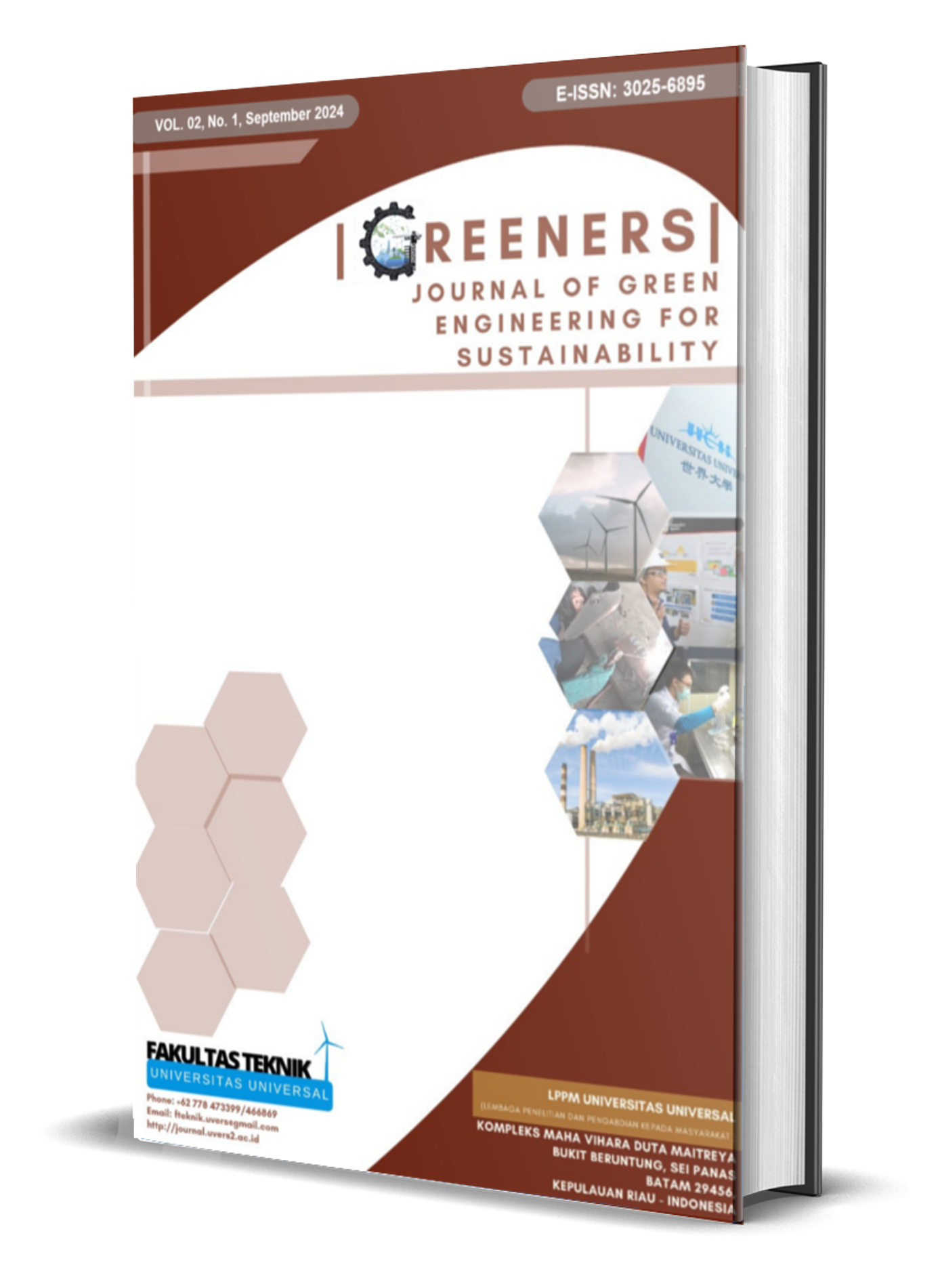Evaluation Existing Condition of Waste Generated Based on Population and Population Density in Batam City
DOI:
https://doi.org/10.63643/jges.v2i1.244Keywords:
waste generated, population, population density, evaluation, descriptive analyisAbstract
Population and population density affect the production of waste generated. The increasing of population and population density in Batam caused by the economic growth. The development of Batam not only led into the increasing of population but also waste generated. Therefore, the aims of this research is to evaluate the existing condition of waste generated based on population and population density in Batam with descriptive analysis. Descriptive statistical analysis was conducted in order to know range value, mean and standard deviation of waste generated, population and population density. The result shows waste generated in Batam has increased into 4.81% from 2021 to 2022. Batam Centre District supplies the most amount waste generated (23%), whereas Nongsa District supplies the less amount of waste generated (4,86%). The Daily waste generation rate in Lubuk Baja is higher than daily waste generated based on SNI. Another specific variable in population might be given impact to waste generated, which is ratio comparation of population based on gender. Descriptive analysis’s result stated that waste generated has range value 12,478,650 – 60,336.220 with standard deviation 14,542,363.712 and mean 28,998,778.89. Population range value is 61,497–226,040 with standard deviation and mean respectively 57,227.43 dan 135,304.22. Last, population density has range value 295 – 6,406 with standard deviation 1,907.59 and mean 2,550.89.
References
T. Bagustiandi, "Analisis dampak pertumbuhan populasi terhadap peningkatan volume sampah di gili trawangan”, Environmental, Social, Governance, and Sustainable Business (ESGSB), vol. 1, pp. 1-10, Februari 2024.
G. Prajati & A.. J. Pesurnay, “Analisis faktor sosiodemografi dan sosioekonomi terhadap timbulan sampah perkotaan di pulau sumatera”, Jurnal Rekayasa Sipil dan Lingkungan, vol. 3, pp. 8-16, Juni 2019.
I. Hidayati, “Daily commute of circular migrant in greater jakarta: a review”, Journal of Demography, Ethnography and Social Transformation, vol. 1, pp. 14-23, Desember 2021.
Badan Pengusahaan Batam, “Tiga Tahun Terakhir, Pertumhuhan Ekonomi Batam Sangat Memuaskan”, bpbatam.go.id, 24 Februari 2024. [Online]. Available : https://bpbatam.go.id/tiga-tahun-terakhir-pertumbuhan-ekonomi-batam-sangat-memuaskan/. [Accessed : 8 Juli 2024].
Dinas Lingkungan Hidup Kota Batam, Dokumen Informasi Kinerja Pengelolaan Lingkungan Hidup Daerah Kota Batam Tahun 2023. Batam : Dinas Lingkungan Hidup, 2023.
Badan Standarisasi Nasional (BSN), SNI 19-3983-1995 - Spesifikasi Timbulan Sampah Untuk Kota Kecil dan Kota Sedang di Indonesia. Jakarta : Badan Standarisasi Nasional, 1995.
G. S. Gumilar dan S. Ainun, “Kajian timbulan dan komposisi sampah di kampus institut teknologi nasional bandung (itenas)”, Jurnal Teknologi Lingkungan, vol. 22, pp. 96-103, Januari 2021.
J. Cheng, F. Shi, J. Yi, dan H. Fu, “Analysis of the factors that affect the production of municipal solid waste in China”, Journal of Cleaner Production, vol. 259, pp. 1-13, Maret 2020.
M. A. Zambrano-Monserrate, M. A. Ruano dan V. Ormeño-Candelario, “Determinants of municipal solid waste: a global analysis by countries’ income level”, Environmental Science and Pollution Research, vol. 28, pp. 62421–62430, November 2021.
M. Qurrota dan A. Lavany, “Pengaruh PDRB Per Kapita, Kepadatan Penduduk, Tingkat Pendidikan dan Belanja Lingkungan Hidup Terhadap Timbulan Sampah di Pulau Jawa Tahun 2010-2019”, Journal of Development Economic and Social Studies, vol. 1, pp. 563–578, Agustus 2022.
M. A. P. Yuda dan Idris, “Analisis Kepadatan Penduduk, Pertumbuhan Ekonomi dan Anggaran Lingkungan terhadap Kualitas Lingkungan Hidup di Indonesia”, JKEP: Jurnal Kajian Ekonomi dan Pembangunan, vol. 4, pp. 53-62, Juni 2022.
M. I. Saitullah, “Correlation of population and the high pollution of household waste in fakkie village, pinrang regency”, CONTINUUM: Indonesia Journal Islamic Community Development, vol. 1, pp. 8-20, Agustus 2022.
DP2KBP3A Pontianak, “Kepadatan penduduk menjadi indikator adanya perbedaan sumber daya yang dimiliki suatu wilayah”, dppkbpppa.pontianak.go.id, 29 Agustus 2023. [Online]. Available : https://dppkbpppa.pontianak.go.id/Informasi/Berita/Kepadatan-Penduduk-Menjadi-Indikator-Adanya-Perbedaan-Sumber-Daya-Yang-Dimiliki-Suatu-Wilayah. [Acessed : 8 Juli 2024].
M. Wahyuni, “Statistik Deskriptif untuk Penelitian Olah Data Manual dan SPSS Versi 25”, Yogyakarta : Bintang Pustaka Madani, 2020, pp. 1-2.
O. G. L. Manulangga, “Estimasi timbulan sampah dan luas lahan tempat pemrosesan akhir sampah (tpa) di kota kupang”, INSOLOGI: Jurnal Sains Dan Teknologi, vol. 1, pp.133–138, April 2022.
I. A. Talalaj dan M. Walery, “The effect of gender and age structure on municipal waste generation in Poland”, Journal Waste Management, vol. 40, pp. 3–8, April 2015.
Downloads
Published
How to Cite
Issue
Section
License
Copyright (c) 2024 Messal Veronica, Gita Prajati

This work is licensed under a Creative Commons Attribution-ShareAlike 4.0 International License.
















